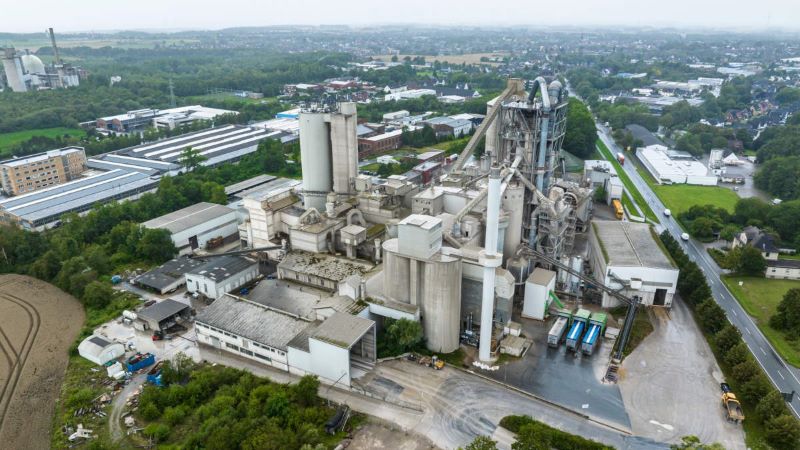
The following presentation was delivered as part of the 2023 American Concrete Institute (ACI) Concrete Convention hosted in San Francisco.
This presentation by Milena Ramgoolam from Vital Metrics was on the topic of Concrete Pavement Sustainability: Optimising Mix Design for Durability. This is the Part 1 of a four-part article.
Introduction
Greetings to everyone at the American Concrete Association convention, and thank you for being a part of today’s presentation on Concrete Pavement Sustainability, specifically focusing on mix design optimisation with durability. I am Milena Ramgoolam from Vital Metrics, and I have had the privilege of working on the Federal Highway Administration sustainable payments programme. Joining me today is my colleague Michelle Health, who is here to assist in addressing your queries.
Understanding sustainability in concrete pavements
Much of our work has been under the Federal Highway Administration and LCP tool, emphasising sustainability in pavement engineering. Today, I aim to shed light on various decarbonisation strategies observed and analysed through our endeavours. My presentation centres on materials, specifically embodied carbon – the carbon contained in our materials and pavement designs. This focus distinguishes itself from operational carbon associated with vehicles driving on roads.
There’s ongoing debate about the significance of embodied carbon versus operational carbon. However, for climate change mitigation, actions addressing embodied carbon matter more immediately. Additionally, embodied carbon is fixed once the project is completed, unlike operational carbon, which can change with advancements in vehicle technology.
Our emphasis on embodied carbon doesn’t dismiss efforts in operational emissions reduction, which includes investments in clean electricity and vehicle electrification. Instead, our focus as pavement engineers is on influencing what we can through our work.
Strategies for reducing embodied carbon in concrete
To effectively address embodied carbon in concrete, we’ve compiled a series of strategies, which range from reducing emissions and replacing intensive constituents to offsetting emissions. We consider readiness for implementation, placement on the carbon management hierarchy, lifecycle phase, economic indicators, and stakeholders as key factors in evaluating these strategies.
One notable approach is material-efficient design through mix design optimisation. This strategy is highly suitable, ready for implementation, and offers certain reductions by minimising the materials used in construction. It primarily occurs during the material production phase and is cost-effective, impacting concrete producers and the industry as a whole.
Another promising strategy is materials substitution using various supplementary cementitious materials. This involves replacing traditional cement constituents with alternative materials. Like material-efficient design, this strategy is highly suitable, ready for implementation, and influences the concrete industry and related stakeholders.
Case studies and published research
In our pursuit of sustainable concrete pavement solutions, we have conducted two noteworthy studies, both of which are extensively detailed in published papers. These studies delve into material-efficient design through mix design optimisation and materials substitution using supplementary cementitious materials. These strategies have demonstrated significant potential for reducing embodied carbon in concrete pavement construction.
The first presentation you may be familiar with, but the second one explores newer dimensions. In this segment, we aim to unravel the intricacies of mix design and its implications on sustainability.
Understanding mix design: collaborating with MCTC
The study on paving concrete was conducted in collaboration with the Mobile Concrete Technology Center (MCTC). The MCTC boasts a remarkable mobile concrete lab that traverses the nation, visiting various paving sites and collecting a wealth of mixture designs. Their efforts include testing and recommending best practices, making them a valuable resource for the concrete pavement community. Their material database is a treasure trove of publicly accessible information, aiding in the advancement of concrete pavement technology.
Continued in Part 2…
More news
- PART 2: CONCRETE IN THE DESIGN OF A UNIQUE LUXURY HOME IN GEORGE, SOUTH AFRICA
- PART 1: CONCRETE IN THE DESIGN OF A UNIQUE LUXURY HOME IN GEORGE, SOUTH AFRICA
- MVULE GARDENS, AFRICA’S LARGEST 3D-PRINTED AFFORDABLE HOUSING PROJECT
- PART 3: HARNESSING THE POTENTIAL OF HIGH SULPHUR FLY ASH IN CONCRETE PRODUCTION
- PART 2: HARNESSING THE POTENTIAL OF HIGH SULPHUR FLY ASH IN CONCRETE PRODUCTION





